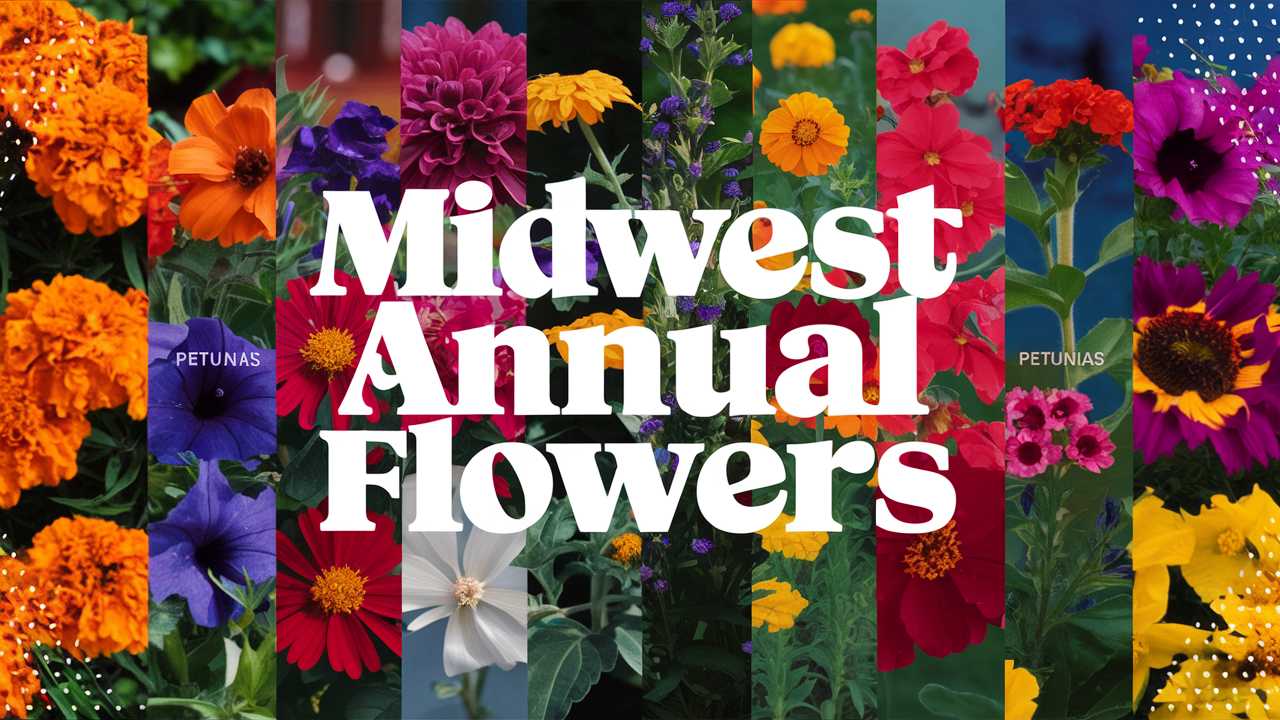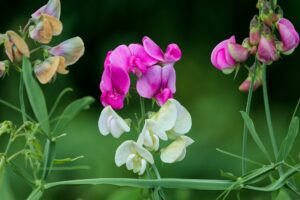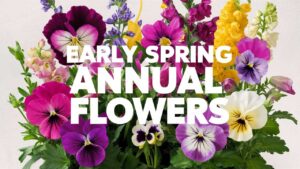Annual flowers, known for their quick growth and ability to bloom all summer long, are perfect for adding an ever-changing palette to any garden. Let’s dig into some of the most beloved annuals that thrive in the Midwest.
Sweet Pea
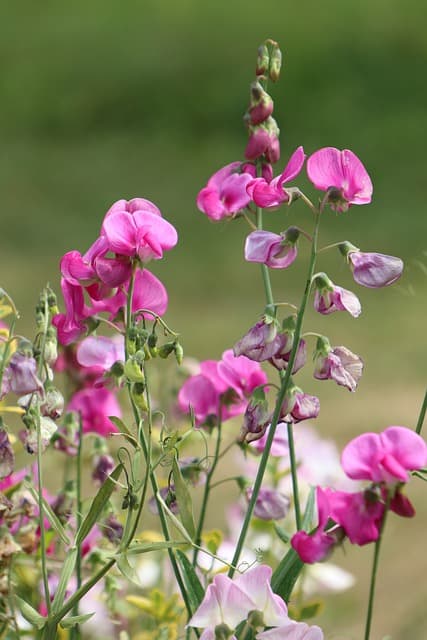
Sweet Pea (Lathyrus odoratus) is a cherished flower in Midwest gardens, praised for its delicate, fragrant blooms. This climbing plant flourishes in cooler temperatures, making spring and early summer the prime time for planting. With their vibrant colors ranging from soft pastels to bold hues, Sweet Peas can be a striking addition to trellises or garden borders.
One of the standout features of Sweet Peas is their alluring fragrance, which attracts pollinators and can transform any garden into a sensory delight. They can be grown from seeds sown directly into the soil or started indoors for an earlier bloom. Regular deadheading encourages continuous flowering and ensures a longer season of beauty. Consider pairing Sweet Peas with other annuals like Pansies to maximize the ornamental effect.
Sweet Alyssum

Sweet Alyssum (Lobularia maritima) is a delightful yet often overlooked annual that brings both charm and functionality to the garden. Known for its petite white, purple, or pink flowers, Sweet Alyssum emits a sweet, honey-like fragrance that is beloved by bees and butterflies. This annual thrives in well-drained soil and loves the sun, although it can handle partial shade.
Alyssum’s low-growing habit—typically reaching around six to twelve inches tall—makes it an exceptional choice for edging or as a filler in containers. Its ability to spread forms a lush carpet of color. Sweet Alyssum is also known for its resilience; it can bloom in cooler temperatures, bringing life to late spring or early fall gardens.
Ammi

Ammi majus, commonly known as Bishop’s Flower or Ammi, is a fascinating annual beloved for its fern-like foliage and delicate white flower clusters. Ammi is often found in cottage gardens and naturalized settings due to its whimsical appearance and ease of growth. It prefers full sun and well-drained soil, making it an excellent companion plant for many other annuals.
One of the most attractive characteristics of Ammi is its ability to attract beneficial insects, including pollinators like bees and butterflies. With a height of up to three feet, it provides an elegant vertical element that contrasts beautifully with other flowers. Ammi can also be used in floral arrangements, adding a touch of ethereal charm.
Gerber Daisy
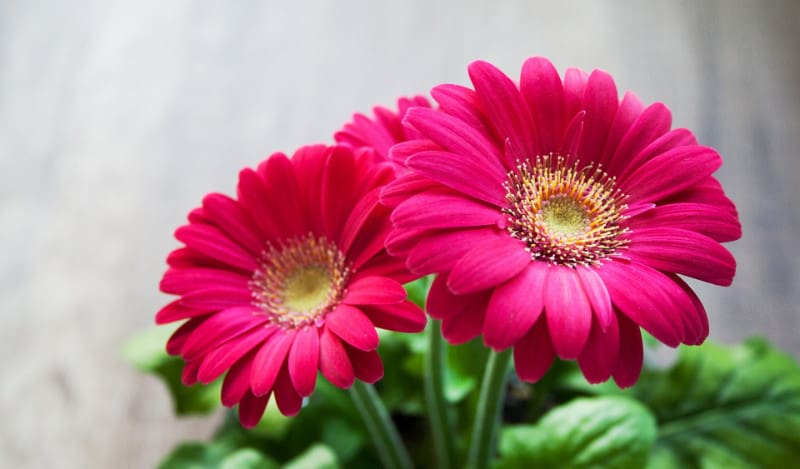
Gerber Daisy (Gerbera jamesonii) is a showstopper in any flower garden. These bright, cheerful blooms come in a plethora of colors, from vivid reds to soft pastels, and can easily become the focal point of any planting scheme. Known for their large, daisy-like flowers, Gerber Daisies bring a sense of joy to any outdoor space.
Growing Gerber Daisies in the Midwest is straightforward, as they thrive in sunny locations with well-drained soil. They are perfect for containers, window boxes, and borders. Deadheading spent blooms encourages further flowering throughout the season. Whether used in gardens or as cut flowers, Gerber Daisies are sure to spread happiness.
Lantana
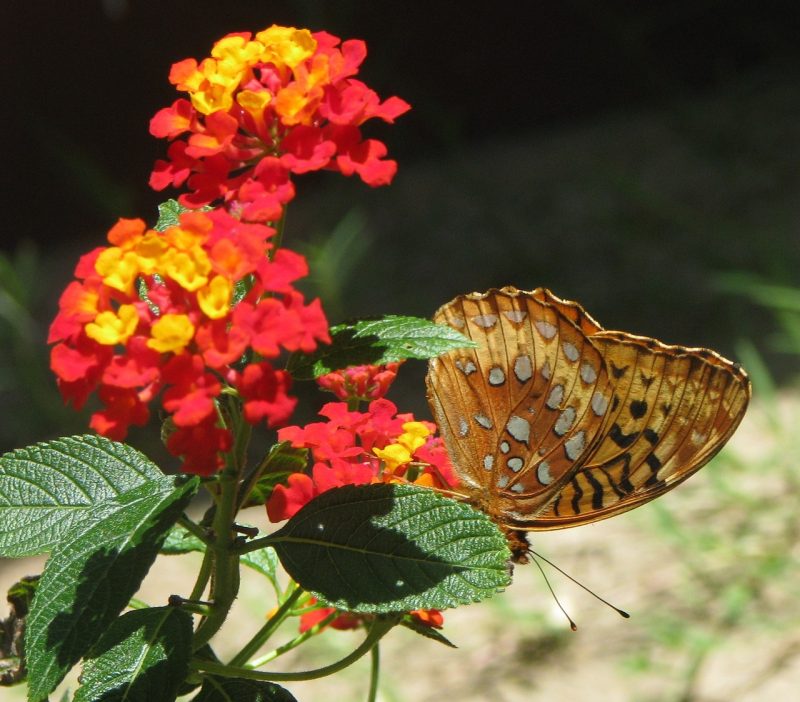
Lantana (Lantana camara) is a sun-loving perennial that behaves as an annual in the Midwest due to its sensitivity to frost. Despite its short life in this region, its vibrant clusters of small flowers and fragrant foliage make it a favorite among gardeners. Lantana comes in a variety of color combinations, and its blooming period extends from late spring until frost.
This hardy plant is particularly appealing because it attracts butterflies and hummingbirds, adding movement and liveliness to the garden. Lantana is drought-resistant once established, making it a practical choice for gardeners looking to reduce water consumption. Its sprawling nature allows it to function well in hanging baskets as well as groundcover.
Nasturtium
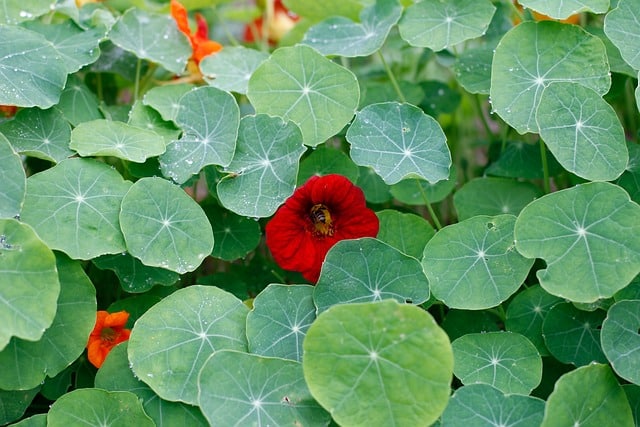
Nasturtium (Tropaeolum majus) is an exquisite annual known for its vibrant and edible flowers. Ranging from deep oranges to bright yellows and reds, this trailing plant is both beautiful and functional. Nasturtiums prefer full sun and well-drained soil, and they thrive in poorer soils, making them hardy and low-maintenance.
Besides their decorative appeal, Nasturtiums boast culinary uses. Their peppery-flavored flowers and leaves can brighten salads and dishes. Additionally, they can attract beneficial insects like aphid predators, acting as a natural pest deterrent in the garden. With their unique shapes and radiant colors, Nasturtiums create a stunning backdrop for any planting scheme.
Love in a Mist
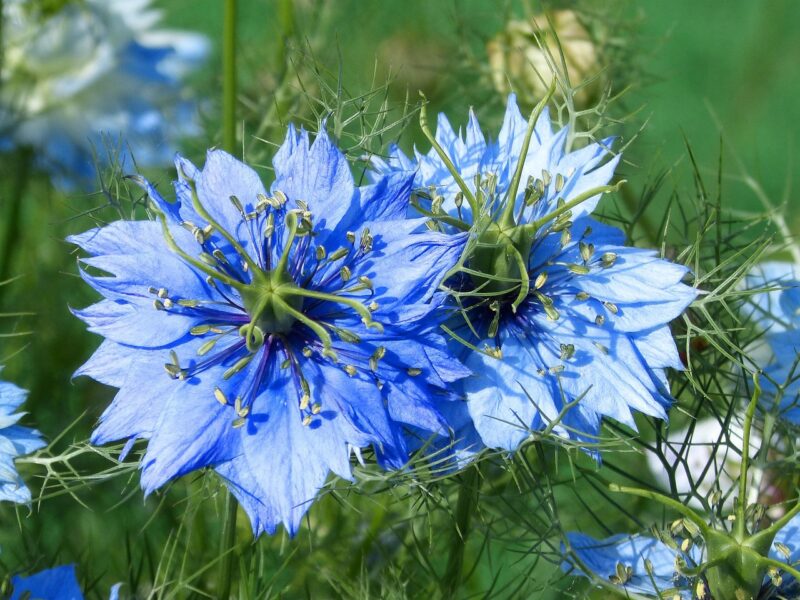
Love in a Mist (Nigella damascena) offers a blend of whimsical beauty and delicate charm. This unique flower, sometimes called “Love-in-a-Mist” due to its feathery foliage, produces flowers that are star-shaped, welcoming shades of blue, white, or pink. The contrasting dissected foliage adds a rich texture that enhances garden aesthetics.
Known for being hardy and straightforward to cultivate, Love in a Mist thrives in well-drained soil and full sun. They can self-seed, ensuring a delightful repeat show year after year. Beyond their enchanting blooms, the seed pods, which develop post-bloom, have an artistic allure, giving added interest even after flowering has ended.
Cornflower
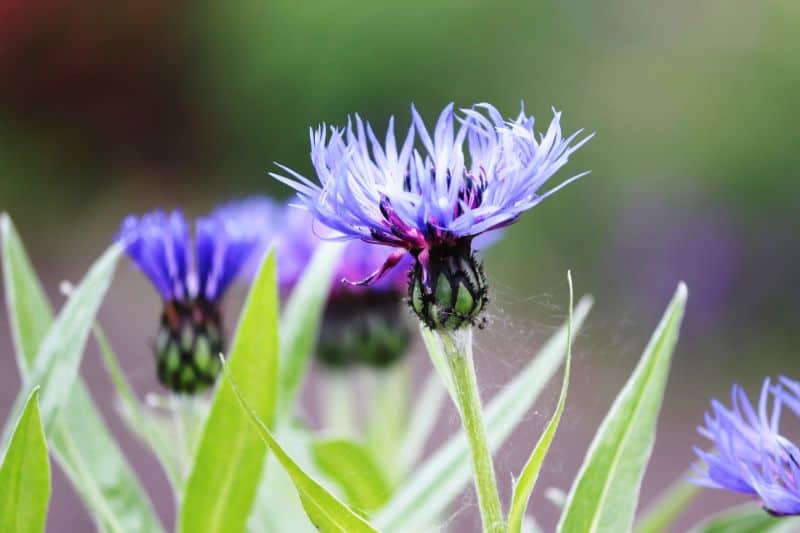
Cornflower (Centaurea cyanus), also known as Bachelor’s Button, is a hardy annual celebrated for its vibrant blue, pink, or white blooms. Once a common sight in agricultural fields, these charming flowers can bring a touch of wildflower nostalgia to home gardens. Cornflowers are easy to grow, requiring minimal maintenance and thriving in poor soil.
In addition to their visual appeal, Cornflowers are excellent pollinator plants, making them a valuable addition to any ecosystem. Their cut flowers make delightful arrangements, infusing bouquets with a rustic charm. With a height of up to three feet, Cornflowers create visual interest and work well in borders and wildflower gardens.
Poppy
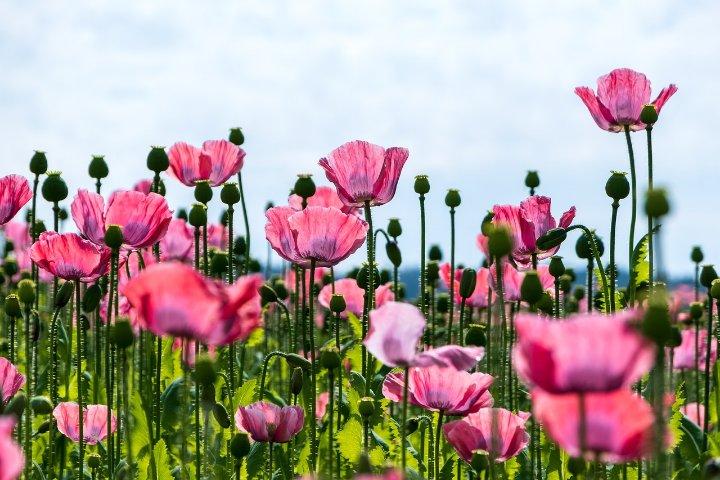
Few flowers capture the heart quite like the Poppy (Papaver). Known for their striking red flowers emblazoned with black centers, Poppies evoke timeless beauty. In the Midwest, both California Poppy (Eschscholzia californica) and Oriental Poppy (Papaver orientale) are popular choices, each bringing unique qualities to the garden.
Poppies thrive in well-drained soil and offer a delightful, albeit short-lived display of blooms. These flowers often self-seed, ensuring that their vibrant presence can re-emerge year after year. Their connection to remembrance and beauty makes them a poignant flower that resonates deeply with many.
Zinnia
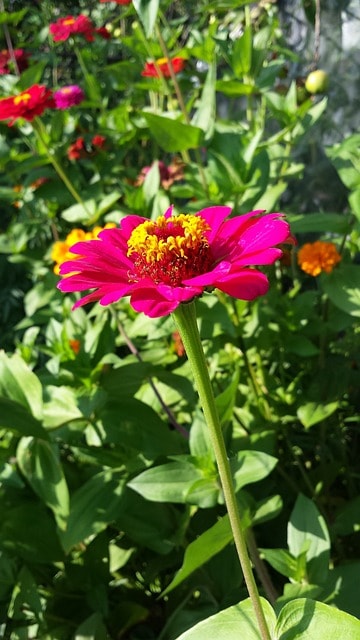
Zinnias (Zinnia elegans) are some of the most beloved flowers in Midwest gardens due to their resilience and vibrant colors. Ranging from small to large blooms, Zinnias come in a kaleidoscope of colors, ensuring that there is something for everyone. They thrive in full sun and well-drained soil, making them easy to grow.
These annuals are also excellent for cut flower arrangements, often lasting a long time in vases. Moreover, Zinnias are a magnet for pollinators, contributing positively to garden ecosystems. Their ease of maintenance and ability to bloom from summer into fall makes them a must-have for any Midwestern garden.
Petunia
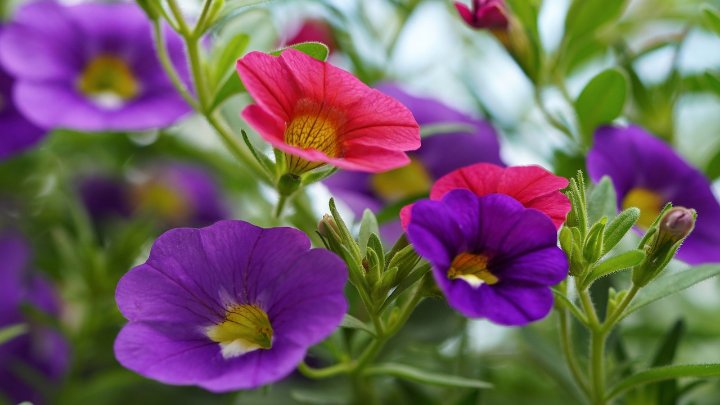
Petunias (Petunia × atkinsiana) are iconic annuals known for their versatility and stunning array of colors and patterns. These flowers come in various types, including spreading, trailing, and upright forms, which create endless possibilities in garden design. Petunias bloom profusely from spring until the first frost, competing to keep color alive throughout the summer.
Petunias prefer full sunlight and well-drained soil, making them ideal for container gardens as well as traditional flower beds. They require regular deadheading to maintain their vigor, but the effort is richly rewarded with continuous blooms. Their rich hues and forms can brighten up any space, making them an enduring favorite.
Begonia
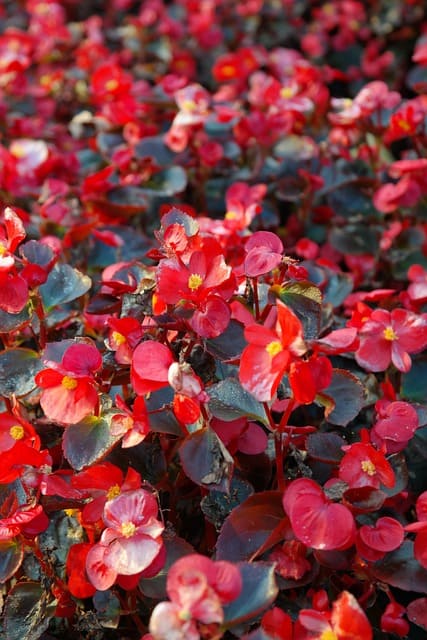
Begonias (Begonia spp.) are a cherished group of annuals prized for their diverse varieties and stunning foliage. While often associated with shade gardens, certain varieties thrive in full sun, adapting perfectly to the Midwest climate. Their flowers come in various colors, providing delightful pops of color throughout the summer.
Beyond their aesthetic appeal, Begonias have thick, fleshy leaves that can withstand various conditions, making them a low-maintenance option. They bring elegance to hanging baskets or containers, often used to transform outdoor spaces into serene retreats. With such variety available, there’s a Begonia suitable for any garden design aesthetic.
Angelonia
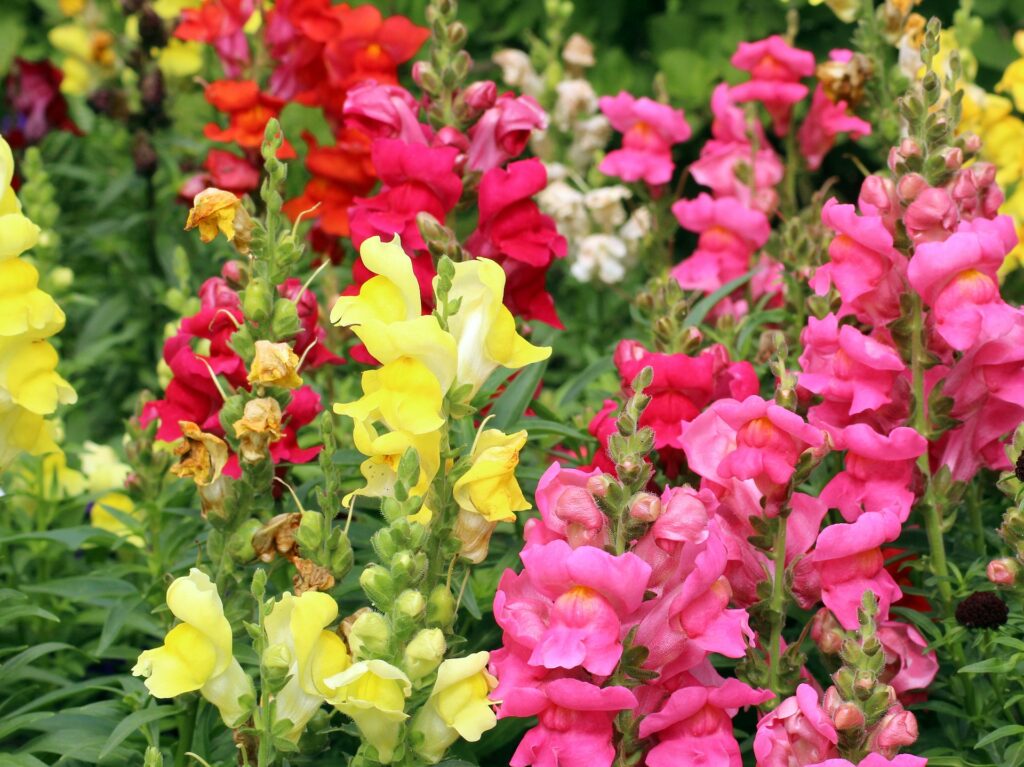
Angelonia (Angelonia angustifolia), known as the summer snapdragon, is celebrated for its tall, spiked blooms and outstanding heat tolerance. This annual is perfect for sunny locations, offering delicate floral displays that can tolerate the heat of the Midwest summer. Their blooms come in shades of purple, blue, and white, often attracting butterflies.
Angelonia prefers well-drained soil and is drought-tolerant, making them an excellent choice for gardeners seeking low-maintenance flowers. Their vertical growth habit creates drama in the landscape, contrasting beautifully with lower-growing annuals. They are perfect for borders, mixed plantings, or containers, adding beauty and resilience to any garden.
Celosia
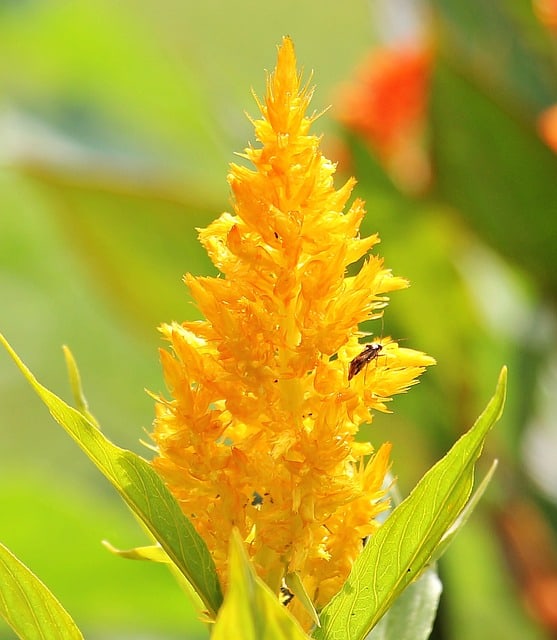
Celosia, commonly referred to as cockscomb or woolflower, is known for its unique, textured blooms resembling soft, colorful fireworks. Celosia thrives in the warm sunshine of the Midwest, offering vivid colors from yellow to deep red. These striking annuals are often used in gardens and arrangements for their dramatic flair and long-lasting blooms.
Celosia is adaptable to various soil types, but it performs best in well-drained conditions. As heat-tolerant plants, they continue to bloom even in summer’s sweltering days. Cutting the flowers regularly encourages more branching, producing a longer flowering season. Their unique shape and vibrant colors create a stunning addition to any garden.
Cosmos

Cosmos (Cosmos bipinnatus) are an easy-to-grow annual that adds a wildflower vibe to gardens. Featuring feathery foliage and large, daisy-like flowers, Cosmos can brighten up any space with their vibrant pink, white, and purple hues. These hardy plants bloom from late spring until frost, making them a favorite for gardeners seeking long-lasting blooms.
Cosmos thrive in well-drained soil and full sun, adapting well to various growing conditions. They are also excellent for attracting butterflies, enhancing the ecology of any garden. With moderate height, they work wonderfully in mixed borders and can even be used in bouquets for their romantic, meadow-like aesthetic.
Geranium

Geraniums (Pelargonium spp.) are one of the most versatile and popular annuals, known for their colorful blooms and distinct fragrances. These plants can be grown as bedding plants, in pots, or even in hanging baskets, with options ranging from upright to trailing varieties. Geraniums are particularly valued for their ability to flourish in sunny locations.
These charming flowers are low-maintenance and tolerate varying soil types, making them accessible to gardeners of all skill levels. Their blossoms can last throughout the summer, particularly with regular deadheading, allowing for a fuller display. Geraniums elevate the garden’s ambiance, offering a continuous burst of color.
Impatiens
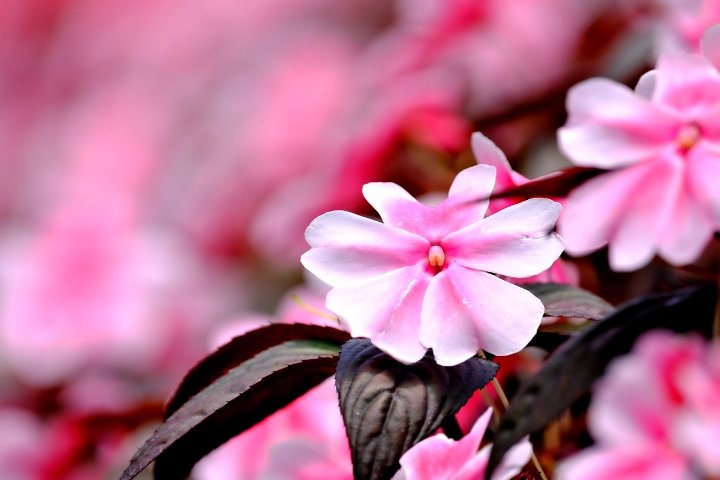
Impatiens (Impatiens walleriana) are a staple of shade gardens in the Midwest. These annuals are known for their lush, colorful blooms, thriving in areas that can’t support sunlight-loving plants. Impatiens prefer rich, well-drained soil and consistently moist conditions, making them perfect for cool, shaded spots.
Their availability in a wide range of colors allows gardeners to create stunning combinations or solid patches of color. The Arabian beauty of Impatiens enhances the aesthetics of gardens, patio containers, or hanging baskets. With their soft, continuous blooms, they bring a touch of elegance and vibrancy to shaded areas.
Marigold
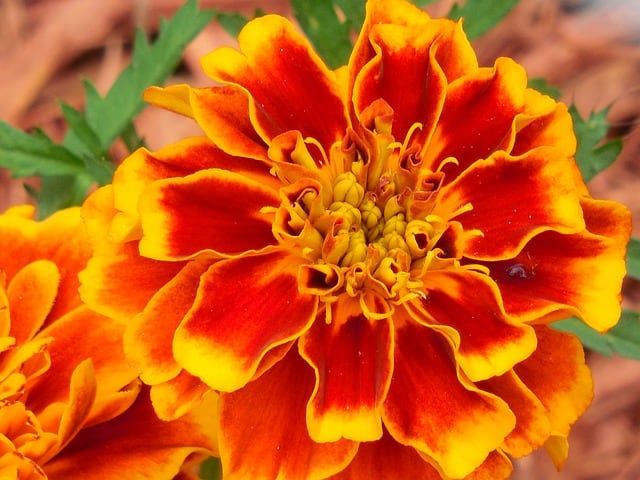
Marigolds (Tagetes spp.) are among the ultimate garden champions, revered for their vibrant colors and ease of growth. These annuals bring warmth to any space, featuring bright yellows, oranges, and golds. Growing marigolds is straightforward, as they thrive in full sun and adapt well to varying soil types.
One of marigolds’ standout features is their ability to deter pests, making them a beneficial companion for vegetables and other flowers. Their flowers are often used in arrangements, and their resilience means they bloom from early summer until the first frost. Marigolds’ cheery disposition makes them a must-have in any Midwest garden.
Snapdragon
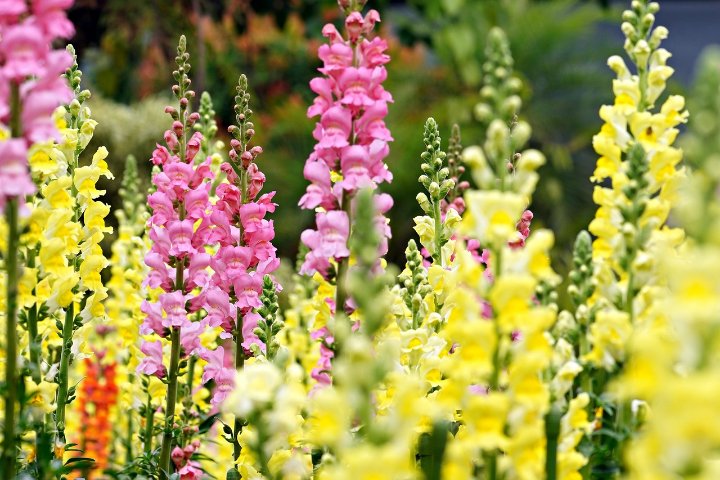
Snapdragons (Antirrhinum majus) are whimsical annuals that can add a unique texture to gardens with their tall spikes lined with brilliant blossoms. Blooming in a variety of colors, snappers can bring elegance and charm with their old-fashioned appeal. They are known for their performance in cooler weather, making them perfect for spring gardening in the Midwest.
Snapdragons prefer well-drained soil and can thrive in both full sun and partial shade. They can be planted in clusters for a stunning visual effect and can also be used as cut flowers. Their delightful, dragon-shaped blooms present an engaging look in the garden, often proving irresistible to children and the young at heart.
Sunflowers

Sunflowers (Helianthus annuus) are iconic symbols of summer, epitomizing joy and warmth in the Midwest. Their massive blooms and towering height bring a sense of drama and brightness to any landscape. Known for their heliotropic behavior, sunflowers turn to face the sun, creating stunning displays both in fields and gardens.
These annuals thrive in full sun and adaptable soil, making them easy to grow for all gardeners. Sunflowers can be used as a focal point in gardens or planted in groups for a striking visual impact. Additionally, they attract pollinators and wildlife, creating lively ecosystems. Harvesting their seeds allows you to enjoy the beauty of sunflowers long after the growing season is over.


